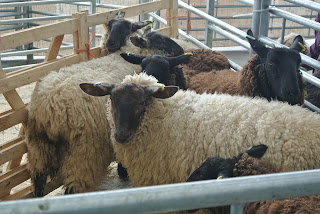For our first project in our second year we are asked to work as a group to create a repeat print for a length of fabric.
For our group repeat we have chosen to look at nature as our theme, we realise that this is a very wide subject to look at but we felt that this would give us all a chance to bring our own ideas to the print.
I chose to concentrate on bee's for my ideas, as this is what i looked into for the end of first year and i really enjoyed all the different ways this theme could take me, and i feel that i only touched the surface when i looked into it before so i wanted to carry this on and see how far it could take me.
The image below was all our first drawings and our first idea for our repeat, i felt like this was all to different, all our drawing styles were different so i thought it would be really easy to see where is would repeat, which isn't something you want when creating a pattern for repeat.
So moving on from this we kept a few of the drawings and we went home and did lots more drawings that would work together.
This was our next idea for a repeat pattern, which i feel works a lot better as a pattern as we have less drawings but we have thought about the placement and thought about the drawings a lot more.
With this we all decided we liked it and thought it would work so next was filling in the white with some mark making which you can see below:
We decided to fill it in with the same mark just to make it flow better as a repeat. We chose this certain mark as we thought it looked like a trail that a bee leaves behind in cartoons, we used this as we have bee's in our repeat.
After we did the mark making came the part were we had to cut it in half and switch it round as to make it repeat.
Next up was it figure out our colour palette, we had a rough idea of the colours we wanted so we went into the print room with at least some idea of what we wanted, which was a big help.
As you can see in the images we tested the colours several times to make sure we had the right shade for what we wanted. We then had to test the final colours together, so for this we had to layer them on top of each other to see how they would change.
From doing this we found that the shade of yellow we had chosen when played over the grey it became opaque and they grey just came through with no sign of the yellow being there, so to solve this we added a small amount of antique gold dye to the yellow and this made it a slightly stronger colour.
After we had done our colours then came the printing we first had to set up out screens to make sure that they repeated properly.
We then had to lay our fabric out and make sure that there were know creases or things under the fabric, this is because any imperfection would impact the print and we want the best quality print that we can get.
Next is getting the first screen which was mainly our background which is in grey, we all had to work together to hold the screen in place to make sure the repeat went together correctly.
This is our first layer, as you can see it is a very light grey which is what we wants as we had other brighter colours to make our print pop.
The next colour was our yellow/ antique gold, the screen went really well over the top, which shows us that we lined all the screens up correctly.
I really liked being able to see it all come together bit by bit.
With this orange/red layer we had a small bit of fabric that wasn't pulled tight enough which you can see it effected the flower above.
We then had to hand paint the flower which was hard but it was a good learning curve as to make sure that all the fabric is as tight to the table as it can be to avoid mistakes.
And then came the last layer which was our blue
I really like how our print came out and i feel we all worked really well together as a group and i feel that this shows in our print.



















































